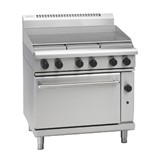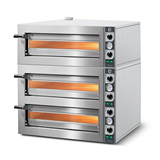Commercial convection ovens are essential workhorses in bustling kitchens, delivering consistent and efficient cooking results. However, like any complex equipment, they are not immune to occasional issues and malfunctions. Troubleshooting these problems promptly is crucial to maintain the oven's performance, minimize downtime, and ensure smooth kitchen operations. In this comprehensive guide, we explore the common issues that can arise with commercial convection ovens and delve into effective troubleshooting techniques. From identifying and resolving cooking problems to handling electrical and mechanical issues, we equip you with the knowledge to keep your convection ovens operating at their best. Let's embark on a journey to troubleshoot common convection oven problems and ensure culinary excellence in your commercial kitchen.
1. Identifying and Resolving Cooking Problems:
Cooking is an art that demands precision and expertise, and commercial convection ovens play a pivotal role in delivering culinary masterpieces. However, even with the most advanced technology, convection ovens may encounter cooking problems that can thwart the creation of perfect dishes.
Identifying and resolving these issues is essential for chefs and kitchen staff to maintain the consistent quality and taste of their creations. From uneven baking to overcooking, each cooking problem requires careful observation and troubleshooting to ensure a seamless culinary journey.
Here are key points to keep in mind:
- Inconsistent Baking Results: Unevenly baked goods may indicate improper oven calibration, incorrect rack positioning, or blocked airflow. Check for calibration issues and adjust as needed. Ensure proper placement of racks and trays to allow even heat distribution.
- Slow Cooking Times: If your oven takes longer to cook food than expected, it could be due to a faulty thermostat or inadequate preheating. Verify the oven's internal temperature with an accurate oven thermometer and calibrate if necessary. Always preheat the oven to the desired temperature before placing the food inside.
- Burnt or Overcooked Food: Burnt or overcooked food may result from excessively high oven temperatures or prolonged cooking times. Calibrate the thermostat and ensure accurate cooking times for each dish.
- Undercooked Food: Undercooked food may be caused by oven temperature fluctuations or inadequate preheating. Calibrate the thermostat, monitor the cooking process closely, and preheat the oven adequately.
- Excessive Dryness or Moisture: Food that turns out too dry or too moist can be the result of incorrect humidity settings or improper steam release. Adjust humidity levels according to the dish being prepared, and be cautious when opening the oven door during cooking to prevent loss of moisture.
By carefully diagnosing cooking problems and taking appropriate actions, you can ensure consistent and delectable results from your commercial convection oven.
2. Diagnosing Performance and Functionality Issues
Commercial convection ovens are the heartbeat of any busy kitchen, working tirelessly to meet the demands of patrons and chefs alike. However, like any intricate machinery, these ovens may experience performance and functionality issues over time.
Diagnosing and addressing these challenges is essential to keep the kitchen running smoothly and maintain the oven's efficiency. From uneven heating to unusual noises, a keen eye and systematic approach are crucial in ensuring the oven remains in peak condition.
Here's what to consider:
- Uneven Heating: Uneven heating may indicate faulty heating elements, damaged fans, or blocked vents. Inspect the heating elements and fans for damage, and clear any obstructions from the vents.
- Excessive Noise: Unusual noises during operation may be caused by worn-out fan motors, loose components, or damaged bearings. Conduct a thorough inspection and tighten any loose parts. If needed, replace faulty components.
- Oven Door Issues: Difficulty in opening or closing the oven door could be due to misaligned hinges, damaged gaskets, or faulty door latches. Check for misalignments and damaged parts, and replace if necessary.
- Inaccurate Temperature Display: If the oven's temperature display is inaccurate, it might be due to a faulty thermostat or control panel. Test the oven's internal temperature with a separate thermometer and recalibrate if needed. Verify the accuracy of the control panel's readings.
- Timer Malfunctions: Timer malfunctions can lead to overcooking or undercooking. Test the timer's functionality and replace it if it's not functioning correctly.
3. Dealing with Error Codes and Malfunctions
In the modern age of technological marvels, commercial convection ovens have become increasingly sophisticated, equipped with intricate systems and electronic components.
These advancements have introduced error codes, which are like the oven's language, conveying specific malfunctions or issues. Dealing with these error codes and malfunctions requires a degree of technical acumen and a systematic approach. Understanding the meaning behind these codes and taking appropriate actions is vital in keeping the oven running smoothly and minimizing downtime in a bustling kitchen.
Here are some common error codes and their potential causes:
- Error Code E1: Temperature Sensor Malfunction: E1 indicates a problem with the oven's temperature sensor. The sensor may be disconnected, damaged, or faulty. Inspect the sensor and its connections, and replace it if necessary.
- Error Code E2: Overheating: E2 indicates that the oven has exceeded the recommended temperature limit. This may be caused by a faulty thermostat, malfunctioning control board, or blocked vents. Inspect the thermostat and control board, and ensure proper ventilation.
- Error Code E3: Shorted or Open Heating Element: E3 indicates an issue with the heating element. It may be shorted or open, preventing the oven from reaching the desired temperature. Test the heating element's continuity and replace if needed.
- Error Code E4: Door Lock Malfunction: E4 suggests a problem with the oven door lock mechanism. Check for any obstructions or damage preventing the door from locking properly. Replace any faulty components if necessary.
- Error Code E5: Internal Communication Error: E5 indicates a communication error within the oven's electronic components. This may require professional diagnosis and repair.
- Error Code E6: Control Board Failure: E6 points to a failure in the oven's control board. If this error persists, seek professional assistance for repair or replacement.
Refer to the oven's user manual or contact the manufacturer for specific error code interpretations and troubleshooting steps.
4. Handling Electrical and Mechanical Problems
Commercial convection ovens are complex appliances that rely on a delicate interplay of electrical and mechanical components. As with any machinery, issues related to electrical and mechanical systems can arise over time. Handling these problems correctly is vital in maintaining the oven's performance and preventing safety risks. A careful approach, technical expertise, and adherence to safety protocols are essential in addressing electrical and mechanical problems that may emerge during the oven's lifespan
Here are key considerations:
- Power Supply Issues: If the oven doesn't turn on, check the power supply, including electrical outlets and circuit breakers. Test the power cord for damage, and replace it if necessary.
- Faulty Thermostat: An inaccurate or malfunctioning thermostat can lead to temperature fluctuations. Test the thermostat's accuracy with a separate thermometer and recalibrate if needed.
- Heating Element Problems: Inspect the heating elements for signs of damage or wear. If they are faulty, replace them promptly to restore proper heating.
- Fan Motor Malfunctions: Unusual noises or fan failure may indicate issues with the fan motor. Inspect the motor for damage or loose connections, and replace if necessary.
- Broken Door Hinges or Latches: If the oven door doesn't close properly, check for broken hinges or faulty door latches. Replace any damaged components to ensure proper door functionality.
- Worn Gaskets: Damaged or worn-out door gaskets can cause heat loss and affect cooking performance. Replace gaskets that show signs of wear or damage.
- Blocked Vents or Airflow Obstructions: Blocked vents can disrupt proper airflow and lead to cooking issues. Regularly inspect and clear any obstructions.
Addressing electrical and mechanical problems promptly ensures the oven's safety, efficiency, and longevity.
5. Troubleshooting with Manufacturer Support:
In the fast-paced world of commercial kitchens, convection ovens are indispensable tools that face rigorous daily use.
Despite their durability, these complex appliances may encounter issues that require expert guidance and technical support. Troubleshooting with manufacturer support is a valuable resource in navigating intricate oven malfunctions and restoring optimal performance.
Leveraging the expertise of the oven's manufacturer ensures that kitchen staff can address challenges effectively and with confidence, minimizing downtime and maintaining seamless culinary operations.
Here's how to troubleshoot with manufacturer support:
- Contacting Customer Support: Reach out to the manufacturer's customer support for assistance with diagnosing and resolving complex issues.
- Provide Detailed Information: When contacting support, provide detailed information about the oven's model, serial number, and the nature of the problem.
- Follow Manufacturer's Guidance: Follow the manufacturer's guidance and recommendations for troubleshooting and repairs.
- Warranty Coverage: If the oven is under warranty, check for warranty coverage for repairs or replacement of faulty components.
- Authorized Service Technicians: For complicated repairs, rely on authorized service technicians recommended by the manufacturer.
Manufacturer support can be invaluable in addressing technical issues and ensuring proper maintenance of the oven.
6. Extending the Lifespan of Convection Ovens:
In the bustling world of commercial kitchens, convection ovens are the unsung heroes, working tirelessly to bring culinary visions to life. As valuable investments, extending the lifespan of these versatile appliances is a prudent endeavor that yields long-term benefits.
With regular care, proper maintenance, and a proactive approach, commercial kitchens can ensure that their convection ovens remain efficient and reliable for years to come, streamlining operations and elevating culinary excellence.
Here's how to prolong the oven's life:
- Regular Cleaning: Clean the oven regularly to prevent the buildup of grease and food debris that can cause damage and affect cooking performance.
- Scheduled Maintenance: Schedule regular maintenance checks with professional technicians to identify and address potential issues before they escalate.
- Proper Usage: Train kitchen staff on proper oven usage and maintenance protocols to prevent misuse and damage.
- Avoiding Overloading: Avoid overloading the oven with excessive trays or racks, as this can strain the oven's components and reduce its efficiency.
- Calibration and Calibration Checks: Regularly calibrate the oven's thermostat and check its accuracy to ensure precise cooking temperatures.
- Ventilation Maintenance: Keep exhaust hoods and vents clean to ensure proper airflow and prevent overheating.
By adopting a proactive approach to maintenance and care, commercial kitchens can prolong the life of their convection ovens and optimize their investment in these essential appliances.
Troubleshooting common issues with commercial convection ovens is a critical skill that empowers kitchen staff to uphold culinary excellence and maintain seamless kitchen operations. From identifying and resolving cooking problems to diagnosing performance and functionality issues, understanding the intricacies of these complex appliances is essential for chefs and kitchen personnel. Dealing with error codes and malfunctions demands technical acumen and a systematic approach, while handling electrical and mechanical problems requires caution and adherence to safety protocols.
In the vibrant and ever-evolving world of culinary arts, the convection oven stands as a steadfast ally, capable of turning raw ingredients into gastronomic masterpieces. With each troubleshooting victory and every maintenance milestone, the kitchen staff ensures that the oven's flame burns bright, illuminating the path to culinary greatness. As these versatile appliances continue to shape the culinary landscape, the dedication to their care and maintenance ensures that the heart of the kitchen beats strongly, infusing every dish with passion, creativity, and culinary brilliance. The journey of troubleshooting and extending the lifespan of commercial convection ovens is a testament to the commitment of chefs and kitchen staff to deliver exceptional dining experiences and tantalize taste buds with their culinary artistry.









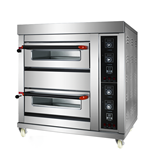

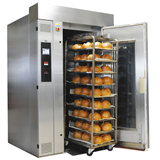
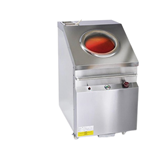
-160x160-state_article-rel-cat.png)
